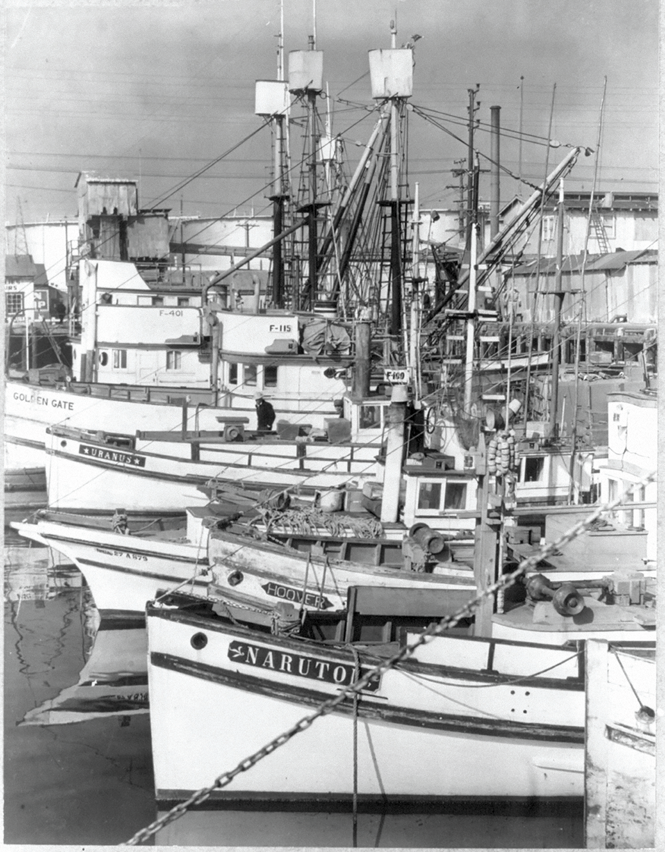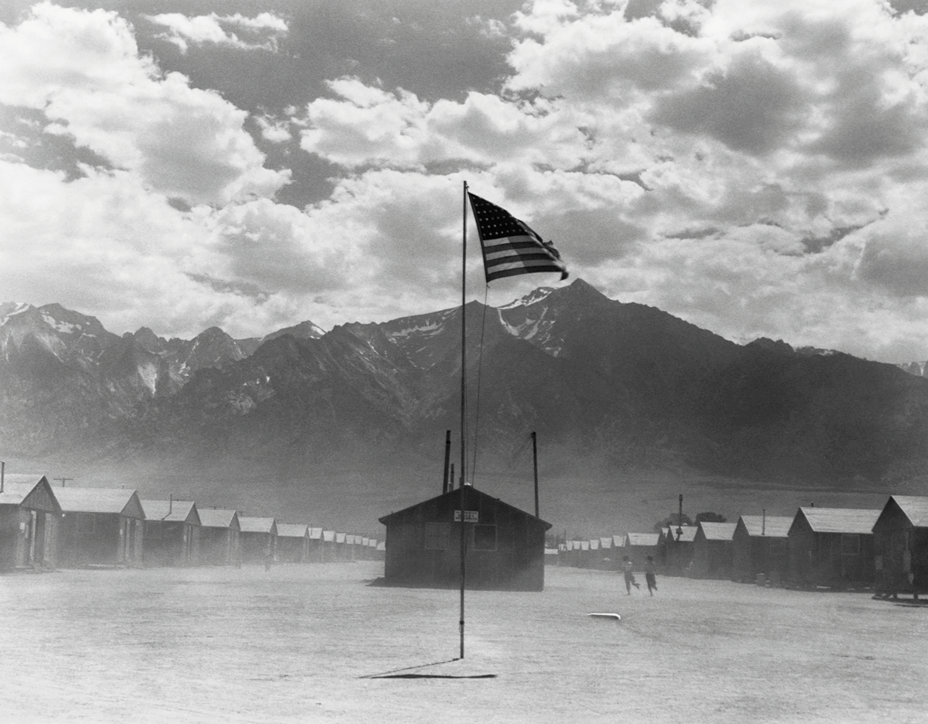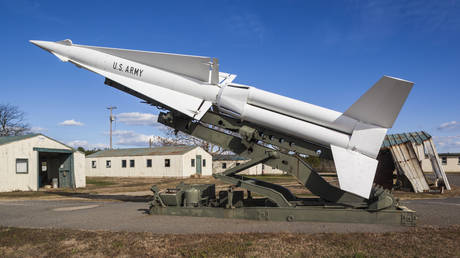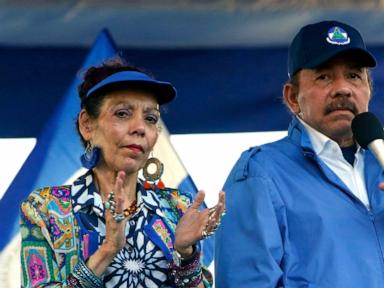ARTICLE AD BOX
Joseph Kurihara watched the furniture pile higher and higher on the streets of Terminal Island. Tables and chairs, mattresses and bed frames, refrigerators and radio consoles had been dragged into alleyways and arranged in haphazard stacks. It was February 25, 1942, two and a half months after the attack on Pearl Harbor, and the U.S. Navy had given the island’s residents 48 hours to pack up and leave.
An industrial stretch of land in the Port of Los Angeles, Terminal Island was home to a string of canneries, a Japanese American fishing community of about 3,500, and, crucially, a naval base. A week earlier, President Franklin D. Roosevelt had signed Executive Order 9066, authorizing military commanders to designate areas from which “any or all persons may be excluded.” The order made no mention of race, but its target was clear: people who were ethnically Japanese.
FBI agents had already rounded up and arrested most of Terminal Island’s men, leaving women to choose what to keep and what to leave behind. Kurihara watched as children cried in the street and peddlers bought air-conditioning units and pianos from evacuating families for prices he described as “next to robbery.”
“Could this be America,” he later wrote, “the America which so blatantly preaches ‘Democracy’? ”
Before long, the chaos Kurihara witnessed on Terminal Island was playing out elsewhere. In March, Lieutenant General John L. DeWitt, the head of the Western Defense Command, began using Roosevelt’s executive order to exclude all people “of Japanese ancestry” from large swaths of the West Coast. The Japanese, DeWitt reasoned, were racially untrustworthy, and thus even people like Kurihara, an American citizen who had joined the Army and deployed to the Western Front during the First World War, posed an espionage risk. “A Jap is a Jap,” DeWitt told newspapers. The military forced Kurihara and more than 125,000 others from their homes, confining them to a circuit of remote prison camps.
Many Japanese Americans attempted to demonstrate their loyalty to the United States through stoic acceptance of the government’s orders. Some even volunteered to fight for the country that had imprisoned them: The 442nd Regimental Combat Team and 100th Infantry Battalion, a segregated Army unit of Japanese Americans, became the most decorated military unit in American history (relative to its size and length of service), fighting the Nazis through Italy and into France. Scouts from the unit were among the first troops to liberate one of Dachau’s camps. In the years after the war, their feats helped burnish a legend of Asian American exceptionalism; their sacrifice affirmed their belonging.
This was the narrative of “Japanese internment” that reigned among my father’s generation. When my grandmother was 20, she and her family were uprooted from Los Angeles and sent to a barbed-wire-enclosed camp in Heart Mountain, Wyoming, for nearly a year; my grandfather volunteered for the 442nd from Hawaii and was wounded by a grenade fragment in northern Italy. I grew up understanding the 442nd’s success as a triumphant denouement to internment, which in turn obscured the suffering of the period. I didn’t have to think too hard about what had happened at Terminal Island or Heart Mountain, or what either said about America.
Kurihara, though, was unwilling to ignore the gap between his country’s stated principles and its actions. He had always believed in democracy, he wrote, but what he saw at Terminal Island demonstrated that “even democracy is a demon in time of war.” During the years he spent incarcerated, shuttled through a succession of punitive detention sites, his doubts festered. He had already served in a war for the United States, and still the country accused him of disloyalty. Kurihara became a scourge of the Japanese Americans urging acquiescence, a radical who for a time openly embraced violence. If America had no faith in him, why would he have faith in America?
The care package, it seemed, had meant a lot. “I hereby most sincerely thank you for the generous package you have sent us Soldier Boys,” Kurihara wrote to the Red Cross chapter of Hurley, Wisconsin. It was 1917, the era of the original I WANT YOU poster, and the 22-year-old Kurihara had volunteered for the Army. Stationed at Camp Custer, in Michigan, he was the only nonwhite soldier in his 1,100-man artillery unit. “By the name you will note that I am a Japanese,” his letter continued, “but just the same I’m an American. An American to the last.”
Kurihara was born in Hawaii in 1895. His parents had emigrated from Japan as plantation workers, joining a cohort that came to be known as the issei, or first generation of the Japanese diaspora. Kurihara and his four siblings were nisei, members of the second generation. After Hawaii was seized by the United States in 1898, Kurihara and others born in the islands were granted U.S. citizenship.
[From the January 2025 issue: Adrienne LaFrance on what America owes Hawai‘i]
In 1915, he moved to California alone, in hopes of eventually attending medical school. There, his biographer, Eileen Tamura, notes, he was shocked to discover widespread antipathy toward Asians. Once, as Kurihara walked through central Sacramento, a man approached and kicked him in the stomach. Elsewhere in the city, children pelted him with rocks. The word Jap, he wrote in an unpublished autobiography, was almost a “universal title.” But Kurihara seemed to believe that this was the bigotry of individuals, not of the country itself.
A friend told Kurihara that midwesterners were more tolerant, so he moved to Michigan. Not long afterward, he enlisted. On July 30, 1918, Kurihara’s division deployed to the Western Front and prepared to drive into Germany, but its planned assault never occurred: On November 11, the armistice ended the war. The following September, Kurihara returned to the United States and was discharged in San Francisco. On a streetcar in the city, still wearing his Army uniform, he heard a man spit “Jap.”
After the war, Kurihara settled in Los Angeles, working as an accountant and then as a navigator on fishing boats. When Pearl Harbor was attacked, he was more than 3,000 miles south of California, plying the waters off the Galápagos Islands for tuna. The ship returned to San Diego Bay just after daybreak on December 29 and found a country at war.
 Fishing vessels belonging to Japanese Americans at Terminal Island, 1942 (Buyenlarge / Getty)
Fishing vessels belonging to Japanese Americans at Terminal Island, 1942 (Buyenlarge / Getty)
Soon after, Kurihara’s captain informed him that government officials had banned him from serving as the ship’s navigator. Suddenly out of a job, he sought work that might aid the war effort. But at shipbuilding and steel yards, he was rebuffed for being Japanese. He returned to Los Angeles just in time to see Terminal Island depopulated.
Kurihara wanted to fight DeWitt’s removal orders. But nisei leaders in the Japanese American community were taking a different tack. At a meeting of a group affiliated with the Japanese American Citizens League (JACL), an ardently pro-American civil-rights organization, Kurihara heard Mike Masaoka, the group’s national secretary, tell the attendees that he had met with DeWitt and urged that they comply with his orders. Kurihara was furious. “These boys claiming to be the leaders of the Niseis were a bunch of spineless Americans,” he wrote.
Japanese Americans of my grandparents’ generation tend to refer to the period that followed as “camp”—just “camp”—cloaking it in a protective shield of euphemism. Academics refer to the relocation centers with the more charged term concentration camps, borrowing the language used by Roosevelt and his administration. Regardless of their name, though, the sites had a clear function: They were open-air prisons.
Kurihara’s was called Manzanar. Built on 6,200 acres of desert at the base of the Sierra Nevada mountains in eastern California, Manzanar held about 10,000 Japanese Americans at its peak. They were crammed into 504 plywood barracks, fenced in by barbed wire and guard towers. Families each received a 20-by-25-foot room; bachelors like Kurihara were assigned roommates. Everyone shared the latrines.
Kurihara was among the first at the camp, arriving in March 1942. The government needed workers to construct the facility, and Kurihara’s priest had encouraged single, able-bodied men to sign up, so that it might be livable by the time families arrived. Aware that he’d wind up there anyway and tempted by the promise of work, Kurihara reluctantly agreed, helping build the camp that would imprison him.
[In Focus: World War II internment of Japanese Americans]
Construction was still ongoing when incarcerees began to arrive in April. That summer, a group of nisei aligned with Masaoka and the JACL created the “Manzanar Citizens’ Federation,” hoping to prove the community’s loyalty to the United States and assert a leadership role at the camp. Kurihara, rankled by the suggestion that he had anything to prove, was determined to undermine them.
At meetings held during the summer of 1942, Kurihara delivered a series of speeches—“dynamites,” he later called them—meant to “bomb the Manzanar Citizens Federation out of existence.” To one rapturous crowd he exclaimed, “If we must prove our loyalty to enjoy the full privileges of American citizens, then why and for what reasons are the Japanese American veterans of World War I doing here? Have they not proven their loyalty already?” The people at Manzanar were incarcerated not because they were “unloyal,” he argued. “It is because we are what we are—Japs! Then, if such is the case, let us be Japs! Japs through and through, to the very marrow of our bones.”
Being incarcerated at a place like Manzanar convinced Kurihara that America—both its people and its government—held DeWitt’s view that “a Jap is a Jap”; nothing could ever prove his loyalty. Kurihara wasn’t alone. In her book Impossible Subjects, the historian Mae Ngai argues that the experience of internment ultimately fostered in many Japanese Americans what the removal orders had been meant to contain: disloyalty.
 Manzanar, July 3, 1942 (Corbis / Getty)
Manzanar, July 3, 1942 (Corbis / Getty)
Tensions between supporters of the JACL and dissidents like Kurihara exploded on December 5, 1942, when masked men entered the barrack of Fred Tayama, the president of the organization’s Los Angeles chapter, and beat him with clubs. Tayama identified Harry Ueno, an ally of Kurihara’s, as one of his assailants. Ueno was arrested by camp authorities, though he was widely perceived as innocent.
The next day, thousands of Ueno’s supporters rallied outside the mess hall, where Kurihara accused Tayama and other JACL leaders of informing on incarcerees deemed insufficiently pro-American to camp administrators and the FBI. “Why permit that sneak to pollute the air we breathe?” he asked, referring to Tayama. “Let’s kill him and feed him to the roving coyotes!”
When negotiations with camp administrators over Ueno’s release collapsed, a crowd mobilized to free him from the camp’s jail and hunt down Tayama and the others Kurihara had condemned. At the jail, military police deployed tear gas to disperse them. Amid the smoke, two soldiers fired live rounds. Two young men were killed; 10 others were wounded.
The shooting ended what became known to some as the “Manzanar Uprising,” and to others as the “Manzanar Riot.” The men Kurihara had threatened were removed from the camp and eventually resettled throughout the country; their status as his targets was apparently sufficient proof of their loyalty. Kurihara, it turned out, was correct—Tayama and the others he’d identified had been reporting “pro-Japanese” incarcerees to camp administrators and the FBI. Kurihara, Ueno, and other “troublemakers” were arrested and moved through a series of “isolation centers” for dissidents. Finally, they landed at a camp called Tule Lake, in remote Northern California, where they were initially held in a stockade.
[The Friendship Files: Two Boy Scouts met in an internment camp, and grew up to work in Congress]
Devastated by the deaths of the two men, Kurihara swore off camp politics and spent most of his time alone, reading his Bible and studying Japanese, a language he’d never mastered. Regardless of the war’s outcome, he had decided that as soon as he could, he would leave America forever.
On December 8, 1945, as an American bomber circled overhead, Kurihara and some 1,500 other Japanese Americans stepped off a naval transport ship at Uraga, a port on Tokyo Bay. The bomber was a reminder of what Japan had endured over the preceding months: The United States had firebombed Tokyo in March, destroying much of the city and leaving more than 1 million people homeless; in August, it had dropped the atomic bombs on Hiroshima and Nagasaki. Japan surrendered not long after.
As the war had stretched on and the American government’s legal authority to incarcerate Japanese Americans had worn thin, Congress had passed a law to allow them to renounce their citizenship; the government had greater leeway to detain and even deport noncitizens under the Alien Enemies Act of 1798. Only a small minority of those incarcerated took the government up on its offer. Kurihara was among the first and asked to be on the first ship to Japan.
From Uraga, Kurihara traveled to the village of Oshima, where his older sister Kawayo had relocated from Hawaii in 1920. Oshima was about 36 miles across a bay from Hiroshima; on August 6, Kawayo may have felt the shock wave from the first atomic bomb.
Not wanting to burden her family, Kurihara moved to Sasebo, a city in the Nagasaki prefecture about 30 miles from where the second atomic bomb had been dropped. As in Hiroshima, the bomb had destroyed nearly every structure within a mile and a half of its point of detonation; even a month later, a U.S. naval officer reported that the city was suffused with “a smell of death.” Lacking employment options, Kurihara took a job with the occupation forces, working for the country he had grown to despise. The U.S. military needed interpreters and recruited Japanese Americans off the docks as their ships arrived. These jobs offered relatively high pay—and guaranteed access to food.
It’s unclear whether Kurihara lingered on the irony of his position. In his correspondence back to the United States, he acknowledged no regrets. “Here I am in Sasebo, working for the Occupational Forces and am doing exceedingly well,” he wrote in a 1946 letter to Dorothy Thomas, a sociologist he had met at Tule Lake. In a Christmas message to Thomas later that year, he requested a pair of black dress shoes, size 7E.
[Morgan Ome: What reparations actually bought]
His time working for the military proved short-lived. The occupation needed people who could translate complex legal documents; Kurihara’s abilities were likely insufficient. After a year in Sasebo, he moved to Tokyo and resumed work as an accountant. He and other repatriates stuck out in postwar Japan. Many were referred to by a racial epithet Kurihara likely never would have heard directed at him before: keto, Japanese for “white man.”
In April 1949, David Itami, a fellow nisei who had also worked for the occupation, wrote a letter to Dorothy Thomas to see if something might be done on Kurihara’s behalf. Kurihara, he said, “does not belong here and does not deserve to be left forgotten.” Kurihara had struggled to adapt to life in Japan; he longed to return to Hawaii. But he hadn’t forgiven the United States.
In the fall of 1962, Kurihara wrote a letter to Robert F. Kennedy, then the attorney general, asking why the U.S. had not reached out to renunciants to restore their citizenship. A lawyer at the Department of Justice replied, noting that, thanks to a lawsuit brought by the ACLU, renunciants simply had to apply to get their cases reviewed. Indeed, among the 5,589 renunciants Kurihara was one of the only ones who by the 1960s had not had their citizenship restored. The Justice Department lawyer failed to grasp what Kurihara demanded: that the U.S. government make the first move. Kurihara remained principled—or imperiously stubborn—to the end. He never returned to Hawaii. He died of a stroke in Tokyo on November 26, 1965.
Mike Masaoka and the JACL seemed to win their debate with Kurihara. Not long after Pearl Harbor, Masaoka had proposed that the Army create a “suicide battalion” of nisei volunteers to fight for the U.S. while their parents were held as hostages in the camps. The Army declined, but the 442nd wasn’t functionally all that different from what Masaoka had suggested. He became its first volunteer, and over the course of the war, the unit earned more than 4,000 Purple Hearts and 21 Medals of Honor.
Speaking at its discharge in 1946, President Harry Truman suggested that the 442nd had affirmed that “Americanism is not a matter of race or creed; it is a matter of the heart.” He continued: “You fought not only the enemy, but you fought prejudice—and you have won.”
Pronouncements like Truman’s bolstered a narrative of internment as America’s “worst wartime mistake,” as the Yale Law professor Eugene Rostow argued in Harper’s in 1945. Remembering it as a mistake, rather than as the result of decades of policy that had excluded Asian immigrants from public life in America, allowed those who had experienced it to move on and ascend into middle-class life. If they shared Kurihara’s sense of betrayal, they didn’t express it and instead worked to rebuild their lives in the United States. My grandfather kept his Purple Heart tucked away in his sock drawer; my grandmother never spoke of her time at Heart Mountain.
As historians came to question the triumphalist story of Japanese American history and activists lobbied for redress from the U.S. government, some came to celebrate Kurihara as a resistance icon. Roy Sano, writing a column in 1970 for the JACL’s newspaper, the Pacific Citizen, called him “a hero for the 1970s.” He continued: “Every JACL banquet which has a special table for veterans should leave an open seat for Joe Kurihara.”
Others couldn’t look past the death threats he made at Manzanar. Writing in the Japanese American newspaper Hokubei Mainichi in 1983, Elaine Yoneda, who had been incarcerated with Kurihara at Manzanar, called him “an embittered manipulator who helped turn some camp residents’ frustrations into a pro-Japan cause.” Kurihara had named her husband a “stool pigeon”; on the night of the Manzanar Uprising, Yoneda and her son had barricaded themselves in their barrack, fearing for their lives. His rhetoric, she argued, “meant and still means plaudits for the rapists of Nanking and Hitler’s butchers.”
Harry Ueno, though, continued to defend his ally. Ueno had renounced his citizenship, but when he heard about the dire conditions in Japan, he fought to remain in the U.S. He and Kurihara kept in touch until Kurihara’s death. “Deep in his heart,” Ueno wrote, “he cried a hundred times for the country he once loved and trusted and fought for.”
In February, I traveled to Washington, D.C., with my parents and two of my siblings to see a book, called the Ireichō, that lists every Japanese American who had been incarcerated. Its creators had invited descendants to mark their relatives’ names with a small stamp, in the hope that all of the 125,284 people in the book might eventually be acknowledged. Gathered in its pages were those who had renounced their citizenship alongside those who had volunteered for the 442nd. Tayama, Yoneda, Ueno, and Kurihara, together just as they had been at Manzanar.
In a small room off the Culture Wing of the National Museum of American History, we placed a neat row of blue dots beneath my grandmother’s name—Misao Hatakeyama—and that of her brother, Kimio, and parents, Yasuji and Kisaburo, and a neighbor my father had grown up with in L.A., and her brother, who had been killed in Italy with the 442nd in April 1945, only days before Germany’s surrender. I thought of those names when, just a few weeks later, the Trump administration invoked the Alien Enemies Act to accelerate the deportation of Venezuelan migrants, the first time the law had been used since it helped provide a legal framework for internment.
I wonder what my grandmother might have thought of Kurihara, or if my grandfather would have welcomed him at the veterans’ table. I have no way of knowing. I imagine they would have disapproved of his tactics and his choice to leave America. But I think they might have understood his anger at the country that had broken his trust, that had practiced values so different from the ones it proclaimed.
This article appears in the August 2025 print edition with the headline “The Expatriate.” When you buy a book using a link on this page, we receive a commission. Thank you for supporting The Atlantic.
.png)
 3 months ago
12
3 months ago
12








 English (US)
English (US)